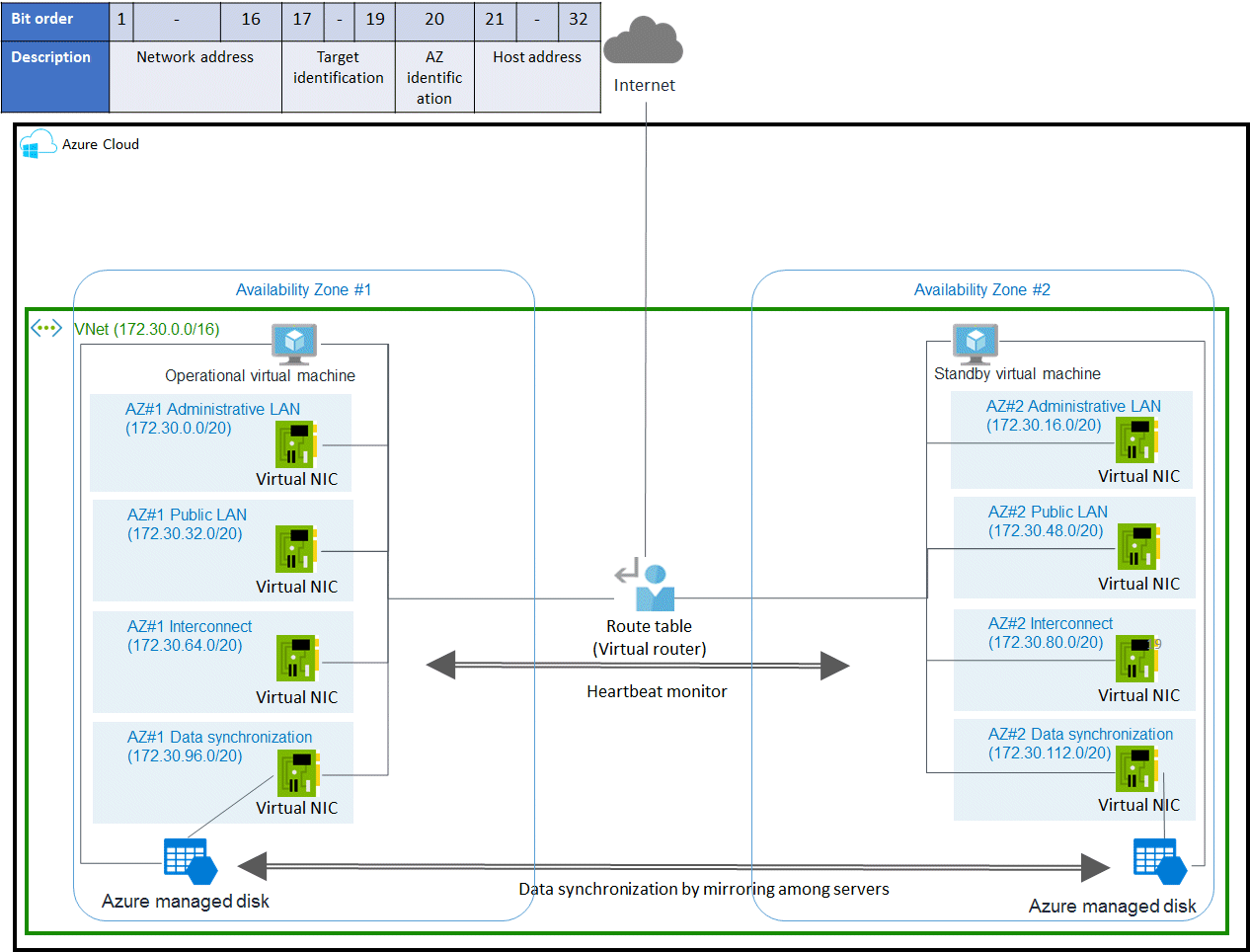For the cluster system in multiple Availability Zones, prepare a virtual network and create a subnet for each purpose.
For easier access control, it is recommended that you use the upper bits of the subnet for role identification of the network and use the lower bits for identification of the Availability Zones.
Figure 26.3 Subnet design of the cluster system in multiple Availability Zones

The following is the procedure to create a private subnet in multiple Availability Zones.
Prepare a virtual network (VNet) to deploy the system.
Define the address space in the VNet. (172.30.0.0/16 in the figure above)
Select the address range according to the network size.
In the VNet, prepare the subnet for each purpose.
Prepare the administrative LAN, the public LAN, the cluster interconnect, and the subnet for data synchronization.
For the prefix length of the subnet, select the appropriate value according to the network size. (The prefix length is 20 in the figure above.)
For a single Availability Zone, prepare a virtual network and create a subnet for each purpose.
Figure 26.4 Subnet design of the cluster system in a single Availability Zone

The following is the procedure to create a private subnet in a single Availability Zone.
Prepare one virtual network (VNet) to deploy the system.
Define the address space in the VNet. (172.30.0.0/16 in the figure above)
Select the address range according to the network size.
In the VNet, prepare the subnet for each purpose.
Prepare the administrative LAN, the public LAN, the cluster interconnect, and the subnet for data synchronization.
For the prefix length of the subnet, select the appropriate value according to the network size. (The prefix length is 19 in the figure above.)
Depending on the selected architectural pattern, additional public subnets may be required.